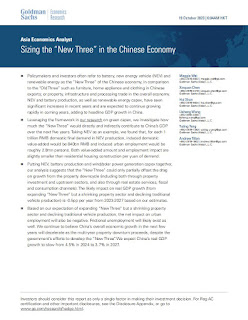China’s policy strategies for green low-carbon development_ Perspective from South-South cooperation
In 2022, UNCTAD published the volume of “China’s Structural Transformation: What can developing countries learn? “. The purpose of the volume was to facilitate peer learning among countries in the Global South by sharing policy experiences. That publication examined diverse policy aspects including macroeconomic framework, trade, industrialization, digital transformation and debt management, shedding light on the factors contributing to China’s economic transformation.
Nevertheless, there exists another dimension of China’s story. The rapid industrialization and urbanization have resulted in resources and environmental challenges for the country, which calls for the transformation of development strategies. Currently, China is the world’s largest emitter but has committed to peak emission by 2030 and reach carbon neutrality by 2060. Considering China’s income level, economic structure, energy mix and the economic growth, achieving the goals poses significant challenges. What policy strategies can be implemented to achieve green low carbon transition while ensuring sustained economic growth for China?
This “updated” volume, China’s Policy Strategies for Green Low Carbon Development: Perspective from South-South Cooperation, adds some valuable insights to the ongoing discussions on this topical issue. It aims to make a substantial contribution to the current discourse on China’s transition process, encompassing both economic and climate aspects. Furthermore, it will enhance the understanding of the binding constraints developing countries encounter at national level, and how to advance green structural transformation through proper policy strategies formulation.
This publication is initiated and designed by UNCTAD, under the project of “Integrated Policy Strategies and Regional Policy Coordination for Resilient, Green and Transformative Development: Supporting Selected Asian BRI Partner Countries to Achieve 2030 Sustainable Development Agenda” funded by UNPDF Sub-Fund for SDG.









Comments
Post a Comment